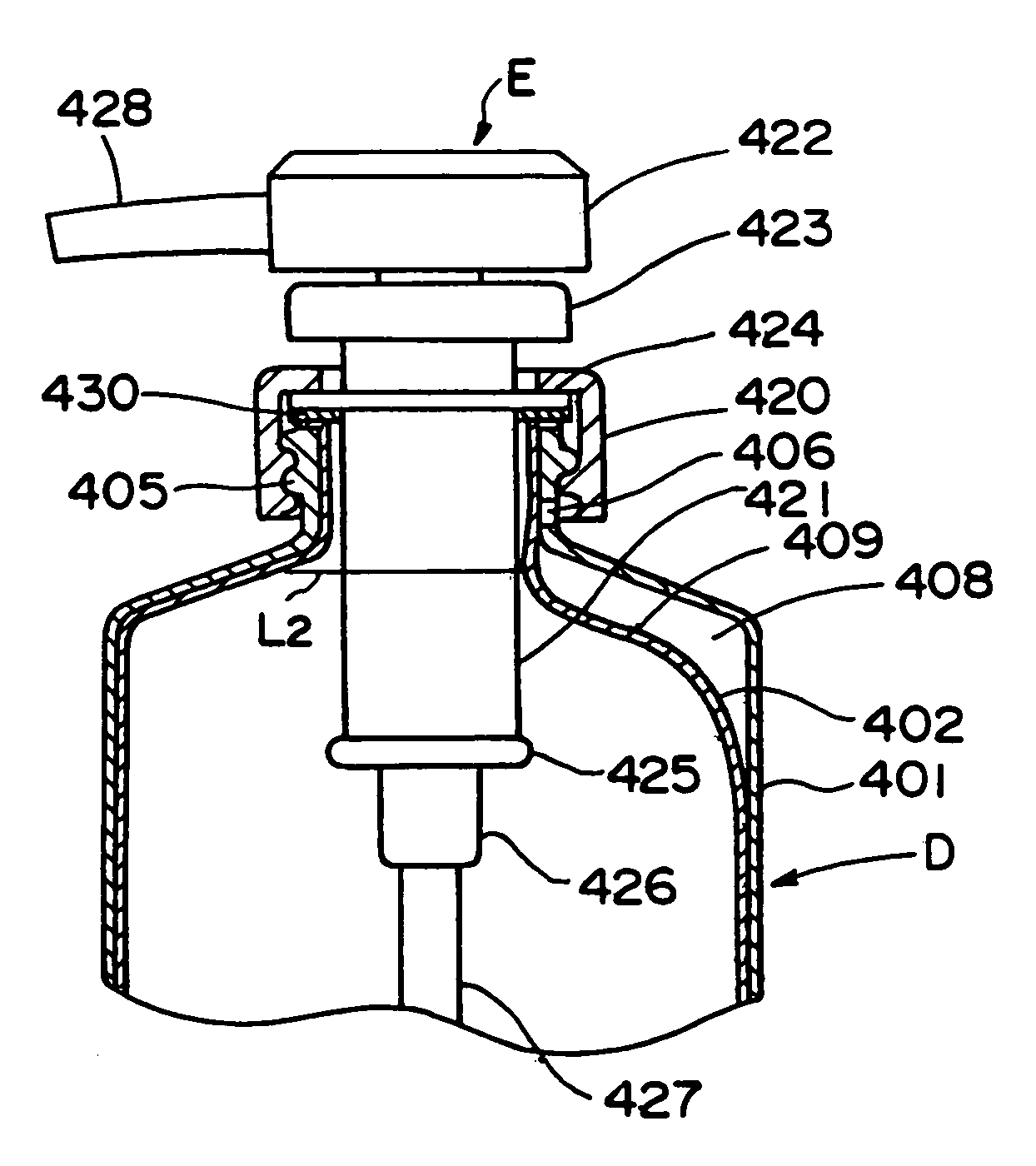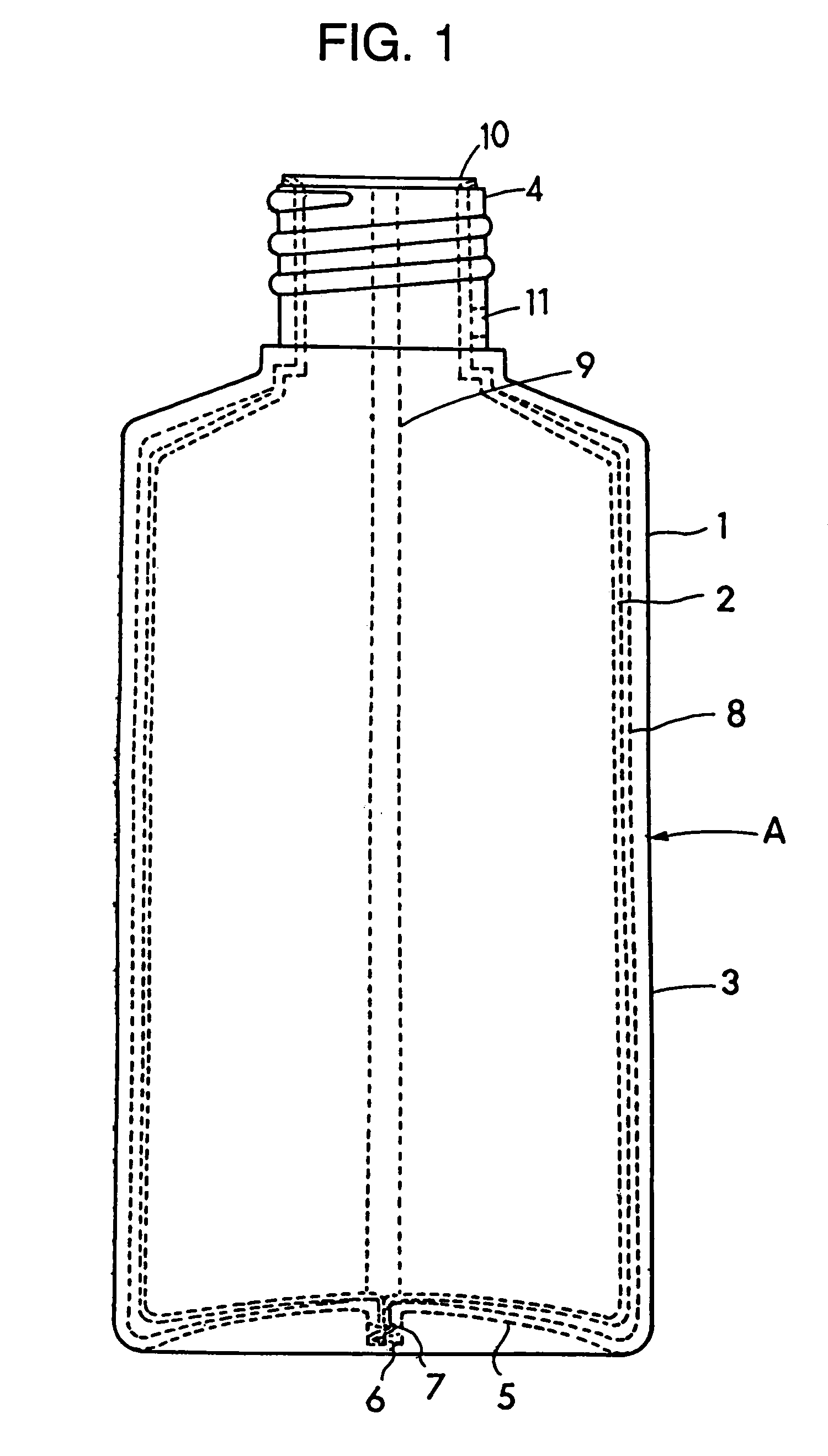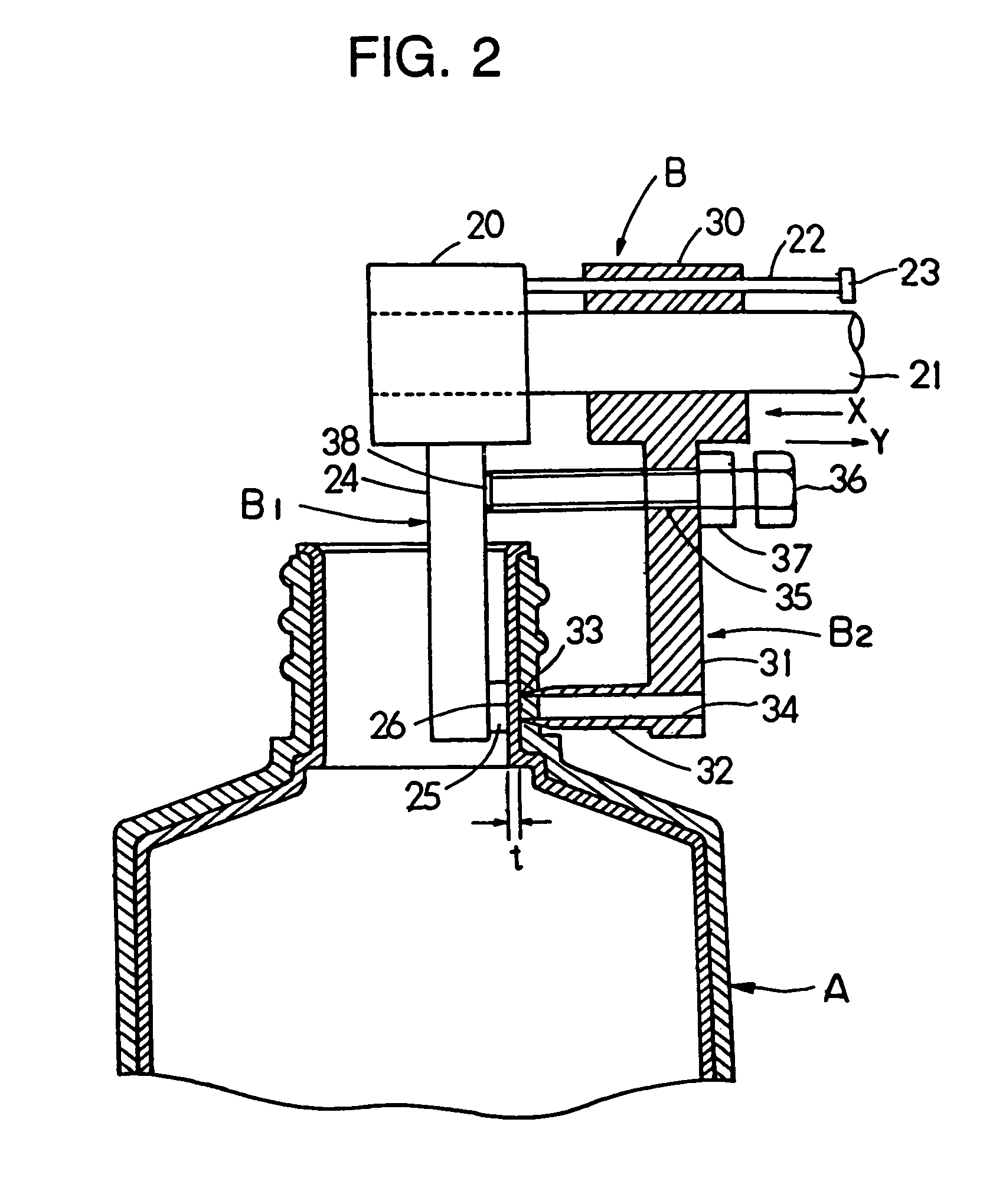Separable laminated container and associated technology
a technology of laminated containers and containers, which is applied in the direction of pliable tubular containers, instruments, single-unit apparatuses, etc., can solve the problems of difficult fusion of outer layers, difficult to form air suction holes, and restrict the selection of resins used for inner layers and outer layers
- Summary
- Abstract
- Description
- Claims
- Application Information
AI Technical Summary
Benefits of technology
Problems solved by technology
Method used
Image
Examples
first embodiment
[First Embodiment]
[0129]FIG. 1 is a front view of a separable laminated container A-according to a first embodiment. The separable laminated container A is made up of an outer layer 1 and an inner layer 2, is formed by blow molding, and comprises a drum portion 3, a neck 4, and a bottom 5.
[0130]The outer layer 1 is made of high-density polyethylene to keep the profile of the container, and the inner layer 2 is an inner bag made of nylon which is separable from the outer layer and deformable. There is a separated area 8 formed between the outer layer 1 and the inner layer 2 and a bonded area 9 where the outer layer 1 and the inner layer 2 are partly bonded in the longitudinal direction.
[0131]The bottom 5 of the container A is provided with a projection 6 which is formed by pinch-offs of a mold during the molding. The projection 6 is provided with a plurality of sunk portions 7 which are arranged zigzag and each sunk in the opposite bonded layer.
[0132]The projection 6 allows the inner...
second embodiment
[Second Embodiment]
[0162]FIG. 3 is a perspective view of a separable laminated container A according to a second embodiment, FIG. 4 is a plan view of the same, and the FIG. 5 is a cross-sectional view of a drum portion thereof.
[0163]The container A comprises a drum portion 102 having an elliptical section, a shoulder 103 continuously connected to the upper part of the drum portion 102, and a cylindrical neck 104 extending upward from the center of the shoulder 103. The container A is made up of an outer layer 111 and an inner layer 112 overall from the neck 104 to a bottom 105 of the drum portion 102. The outer layer 111 and the inner layer 112 are bonded each other at a strip of bonded area 113, while the outer layer 111 and the inner layer 112 are just in contact with each other besides the bonded area 113 in such a manner as to be separable from each other. FIG. 5 shows a state before the inner layer 112 is separated from the outer layer 111.
[0164]The bonded area 113 linearly ext...
third embodiment
[Third Embodiment]
[0181]FIG. 6 is a front view of a separable laminated container A according to a third embodiment wherein parts being broken away and FIG. 7 is a longitudinal sectional view of the same, as seen from the side.
[0182]The separable laminated container A is made up of an outer layer 201 and an inner layer 202 and comprises a drum portion 203, a neck 204, and a bottom 205.
[0183]The outer layer 201 is made of high-density polyethylene to keep the profile of the container, and the inner layer 202 is an inner bag made of nylon which is separable from the outer layer and deformable. The outer layer 201 and the inner layer 202 of the container A are made by blow molding of a laminated parison which is formed by co-extrusion.
[0184]In this embodiment, the nylon used in the inner layer 202 is copolymer of nylon 6 having flexural modules of 650 kg / cm2, providing excellent flexibility.
[0185]Besides the nylon 6, any other nylon or any other synthetic resin material may be employed...
PUM
| Property | Measurement | Unit |
|---|---|---|
| volume | aaaaa | aaaaa |
| volume | aaaaa | aaaaa |
| shrinkage | aaaaa | aaaaa |
Abstract
Description
Claims
Application Information
 Login to View More
Login to View More - R&D
- Intellectual Property
- Life Sciences
- Materials
- Tech Scout
- Unparalleled Data Quality
- Higher Quality Content
- 60% Fewer Hallucinations
Browse by: Latest US Patents, China's latest patents, Technical Efficacy Thesaurus, Application Domain, Technology Topic, Popular Technical Reports.
© 2025 PatSnap. All rights reserved.Legal|Privacy policy|Modern Slavery Act Transparency Statement|Sitemap|About US| Contact US: help@patsnap.com



